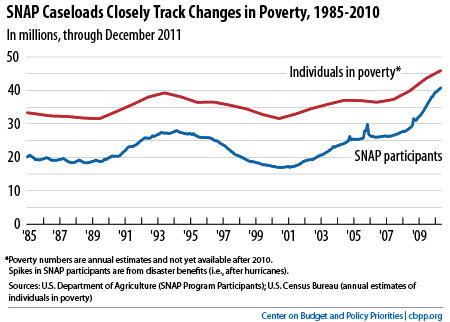BEYOND THE NUMBERS
SNAP Working as Intended to Fight Hunger and Lift Families Out of Poverty
Testifying today before the House Agriculture Subcommittee on Nutrition and Horticulture, Stacy Dean, the Center’s Vice President for Food Assistance Policy, explained that the Supplemental Nutrition Assistance Program (SNAP, formerly known as food stamps) “is working as it’s supposed to work” to meet the critical needs of one in seven Americans — a figure that speaks both to the extensive need across the country and to SNAP’s important role in addressing it.
The main findings of her testimony:
- SNAP does an admirable job of meeting its core purpose — to provide a basic nutrition benefit to low-income Americans. The program has largely eliminated severe hunger and malnutrition in the United States.
- SNAP is highly responsive to need. As an entitlement, it responds quickly and effectively to support low-income families and communities during times of economic distress. Since December 2007, when the recession began, SNAP enrollment has increased by 19 million people (see chart).
- SNAP is a powerful anti-poverty program. SNAP lifted about 4 million Americans above the poverty line in 2010, including about 2 million children. Roughly 93 percent of SNAP benefits go to households with incomes below the poverty line.
- SNAP is an important work support. The number of low-income working households on SNAP has risen dramatically over the past decade, reflecting both a substantial rise in SNAP participation among eligible low-income working households as well as wage erosion at the low end of the wage scale.
- SNAP benefits are among the most effective forms of economic stimulus. Moody’s Analytics estimates that in a weak economy, every $1 increase in SNAP benefits generates $1.71 in economic activity.
- SNAP growth was not a result of waste or fraud. SNAP has one of the most rigorous payment error measurement systems of any public benefit program, and its payment error rates are at an all-time low. In 2010, only 3 percent of all SNAP benefits represented overpayments.

“Cutting SNAP benefits as a means to achieve deficit reduction has serious negative consequences,” Dean told the subcommittee. “It would compromise low-income Americans’ ability to obtain a basic diet and it would have potential health effects on substantial numbers of our most vulnerable.”
Click here for the full testimony.
